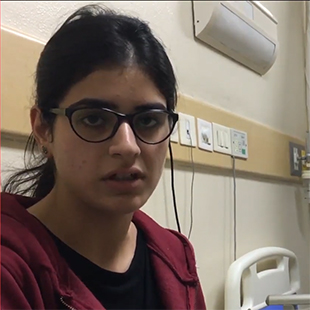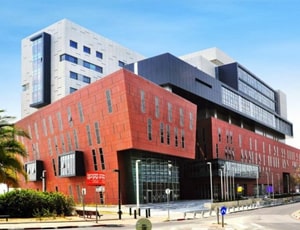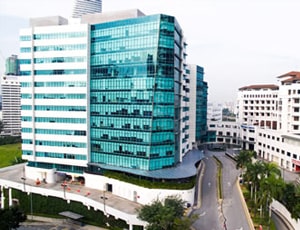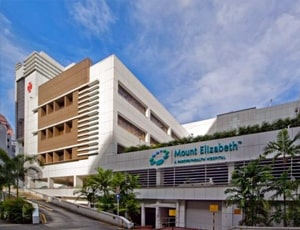Spinal fusion surgery is a type of spinal procedure used to join two or more bones permanently in the spine and to prevent movement between them. The bones that are joined are called vertebrae. Spinal fusion surgery is performed along with other surgical procedures such as foraminotomy or laminectomy and after diskectomy in the neck. It is required if the patient has an injury or a fracture of the vertebrae. The spine will become weak due to an infection or tumors. Spinal fusion is also performed in abnormal curvatures that result from scoliosis or kyphosis.
Spinal fusion is a procedure that links two or more bones in the spine to enhance stability, address issues, or alleviate pain. It can be employed for various purposes:
Reshaping the Spine: Spinal fusion helps correct spine formation abnormalities, such as sideways curvature (scoliosis).
Addressing Weakness or Instability: When excessive movement between two spinal bones causes instability, often due to severe arthritis, spinal fusion makes the spine more secure.
Dealing with Damaged Disks: After removing a damaged disk, spinal fusion may stabilize the spine and promote overall structural integrity.
Before spinal fusion surgery, individuals may experience various signs and symptoms related to the underlying spinal condition that necessitates the procedure. Common signs and symptoms that might prompt a recommendation for spinal fusion include:
Before undergoing spinal fusion surgery, a thorough diagnostic process is typically conducted to assess the specific condition of the spine and determine the appropriateness of the procedure. Common diagnostic tests and evaluations before spinal fusion may include:
During spinal fusion, surgeons perform the procedure while the patient is under general anesthesia. The specific technique used depends on factors like the location of the spinal bones to be fused, the purpose of the fusion, and the individual's overall health.
Here's an overview of the process:
Following spinal fusion surgery, patients typically stay in the hospital for two to three days. While some pain and discomfort may be experienced, effective medication management is usually provided. Once at home, promptly contact your doctor if signs of infection arise, such as redness, swelling, wound drainage, shaking chills, or a fever exceeding 100.4°F (38°C).
The healing and fusion of the affected spinal bones may take several months. Your doctor might recommend wearing a brace temporarily to maintain proper spinal alignment. Additionally, physical therapy can guide you in adopting movements and postures that support the correct alignment of your spine.

India
Asmina Kauser Shuntoo from India underwent Complicated Spine Surgery Read Full Story

Tel Aviv, Israel
Assuta Medical Center is a leading private hospital in the capital city of Tel Aviv in Israel. Assut...more
![]() Airport Transfer
Airport Transfer
![]() Choice of Meals
Choice of Meals
![]() Interpreter
Interpreter
![]() TV inside room
TV inside room

Kuala Lumpur, Malaysia
History Parkway Pantai Hospital in Kuala Lumpur, Malaysia is operating under the Parkway Pantai gro...more
![]() Airport Transfer
Airport Transfer
![]() Choice of Meals
Choice of Meals
![]() Interpreter
Interpreter
![]() SIM
SIM

Singapore, Singapore
Mount Elizabeth Hospital is a multispecialty healthcare facility operated by Parkway Health. The hos...more
![]() Private Driver / Limousine Services
Private Driver / Limousine Services
![]() International Cuisine
International Cuisine
![]() Phone in Room
Phone in Room
![]() Online Doctor Consultation
Online Doctor Consultation

Neurosurgeon
Ghaziabad, India
18 Years of experience
USD 22 for video consultation

Neurosurgeon
Istanbul, Turkey
7 of experience
USD 295 for video consultation

Neurosurgeon
Istanbul, Turkey
20 Years of experience
USD 200 for video consultation

Spine & Neurosurgeon
Noida, India
20 Years of experience
USD 36 for video consultation
What is a spinal fusion surgery?
It involves permanent joining two or more vertebrae to prevent movement between them. This fusion is necessary when movement between the vertebrae causes severe pain.
How are the vertebrae fused together?
A bone graft or a synthetic bone is used as a substitute. These are placed between the vertebrae and cause the bone to fuse and prevent movement within this space.
Q. Is spinal fusion a painful operation?
A. The surgery is performed keeping the patient under general anesthesia. Postoperative pain and discomfort may occur but it varies depending on patient’s physical condition, age, and the location of the vertebrae.
Q. What are the risks associated with spinal fusion surgery?
A. The risks associated with spinal surgeries include the formation of blood clots and infection. With a spinal surgery, additional risks include nerve damage and increased wear of the vertebrae near the site of fusion.